The 6 Presenter Types: Which one are you?

3 bullets on a slide. 1 slide per minute. Stand Still. Don’t fidget, memorize your slides. Now get up in front of a 100 people and do what I just told you. If you have been to Presentation training, you have probably heard many of these “Rules” before. You’ve been given the “right” way to present; the ONLY way to present. Yet it somehow feels like an unnatural act.
Over the last 10 years we’ve worked with thousands of clients in a range of industries. All of them know that if you want to get ahead, you have to be good on your feet. They’ve been to presentation seminars, Toastmasters and Dale Carnegie programs. From the most experienced CEO’s to the newest recruits, everyone’s secret wish is to be a better presenter, to nail that pitch or persuade one more person. Yet — and you know this in your heart — the general standard of presenting is very poor. Why? Pretty much everyone preaches one way to do it. And that’s just plain wrong.
There are 6 types of presenter. If you understand which one you are, if you understand where your strengths and weaknesses lie, you can get better. But the path forward is not the same for everyone.
Diagnose your presenter type. Take one minute to find your presenter type for fast-acting relief from PowerPoint pain.
1. The Coach
 Is an energetic and personable speaker, who’s great at connecting and engaging people by doing and role-playing. They are better live than remote or over the phone. They usually very passionate about the topic and let that shine through.
Is an energetic and personable speaker, who’s great at connecting and engaging people by doing and role-playing. They are better live than remote or over the phone. They usually very passionate about the topic and let that shine through.
The Coach can quickly lose passion and enthusiasm with a low energy audience. They have a tendency to talk more than listen. May move too quickly for the audience, and not connect the dots for them.
The Coach will dive right into building a deck and start with the slides that come easily. To practice, they go to a quiet place, pace up and down with a script, talk to themself to commit what they want to say to memory.
Example: Rick Perry
2. The Inventor
 Typically the last person to volunteer to make a public presentation, the Inventor is very good at connecting ideas for people and building logical sequences. They are usually much more comfortable once finished and working through a Q&A.
Typically the last person to volunteer to make a public presentation, the Inventor is very good at connecting ideas for people and building logical sequences. They are usually much more comfortable once finished and working through a Q&A.
The Inventor has difficulty holding large quantities of information in their head. They can get stuck searching for just the right word and worry about forgetting something important.
The Inventor will start building a deck right away, by either writing a script or building slides. They start with key pieces. Building the deck gives them a firm grasp of the material so they tend not to practice much. They are very uncomfortable speaking off someone else’s work.
Example: Steve Jobs
3. The Counselor
 An eloquent speaker who likes to talk about ideas. The Counselor has an accurate and organized talk track, and a relentless stream of logic that’s easy to follow. They can move easily between big picture and detail.
An eloquent speaker who likes to talk about ideas. The Counselor has an accurate and organized talk track, and a relentless stream of logic that’s easy to follow. They can move easily between big picture and detail.
The Counselor can make the same presentation to an empty room as a large audience. They may fail to connect to and engage with the audience. Can be very dry and clinical. They tend to use big words where they aren’t required.
The counselor builds by pulling slides together from previous decks, sequencing and re-sequence slides to feel comfortable with the flow and structure.
Example: Barack Obama
4. The Storyteller
 A natural storyteller who speaks with feeling and rhythm. They can win an audience over easily. They use powerful and emotive words typically organized around what needs to get done. They add depth and detail through story and experience.
A natural storyteller who speaks with feeling and rhythm. They can win an audience over easily. They use powerful and emotive words typically organized around what needs to get done. They add depth and detail through story and experience.
By embellishing and adding detail to the story, the storyteller can lose the structure and flow for the audience. They tend not to track to slides, confusing the audience. Find it difficult to dry run well in front of empty rooms.
The Storyteller prefers someone else to build their slides. This process can have a lot of stops and starts as they sort in their own mind what they want to say. These short monologues and conversations with the mini-audience prior to the big show is the way the storyteller practices.
Examples: Newt Gingrich, Mike Huckabee.
5. The Teacher
 Can easily get complex ideas across. They use a lot of figures of speech and metaphors. They are well structured speakers, who have the ability to carry a long talk-track in their head.
Can easily get complex ideas across. They use a lot of figures of speech and metaphors. They are well structured speakers, who have the ability to carry a long talk-track in their head.
The Teacher cares more about their material than the people in the audience. They may inadvertently disconnect from their audience, missing non-verbal cues and become distant. Visuals they use may be overly complex “wiring diagrams.”
The Teacher starts with an outline and builds a talk-track off it. They tend to builds decks in a logical order and use visuals to illustrate ideas and points.
Examples: Mitt Romney, Al Gore.
6. The Coordinator
 Prefers to be in the audience rather than the presenter, they nevertheless give organized, well-structured presentations, moving and gesturing as they speak. Their slides are visually meticulous and trigger a well thought out talk-track.
Prefers to be in the audience rather than the presenter, they nevertheless give organized, well-structured presentations, moving and gesturing as they speak. Their slides are visually meticulous and trigger a well thought out talk-track.
The Coordinator is less comfortable speaking, but prefers working through their material than in a freeform Q&A environment. They are not comfortable working off others material.
The Coordinator starts with an outline and builds key points, usually reflecting personal experience. They then prepare and sequence their deck.
Everyone has natural strengths and weaknesses when it comes to presenting, yet most people use PowerPoint in a way that exaggerates their weaknesses instead of playing to their strengths. One size does not fit all, and following a set of “rules” that would work well for an inventor won’t work for a storyteller. What are you?
…
 Gavin is a founding partner at fassforward consulting group. He blogs about PowerPoint, Presenting, Communication and Message Discipline at makeapowerfulpoint.com. You can follow him on twitter @powerfulpoint.
Gavin is a founding partner at fassforward consulting group. He blogs about PowerPoint, Presenting, Communication and Message Discipline at makeapowerfulpoint.com. You can follow him on twitter @powerfulpoint.
More at Google+, Facebook and Pinterest. Comments are welcome, links are appreciated. If you’re interested in writing guest posts for this blog, please contact me.
Trackbacks & Pingbacks
- How To Avoid Your Rick Perry Moment | make a powerful point
- PowerPointer in Chief? | make a powerful point
- Quora
- PowerPoint Meltdown | make a powerful point
- Learning to Understand, Engage and Remember | make a powerful point
- How Does Your Presenter Type Build Relationships | Dr. Michelle Mazur
- Comparing the candidates | make a powerful point
- The PowerPoint gospel of Steve Jobs | make a powerful point
- Natural Vocal Variety: The roles you say | Kate's Voice
- Natural Vocal Variety: The roles you say – Kate Peters | Communication Weekly Newsletter
- First Reaction: President Obama’s Second Inaugural Address – The Presenters' Blog
- Death By (To) Powerpoint – Eat More Fish.
- DRAFT: Putting Powerpoint on a Diet | make a powerful point
- Lessons from a 4th Grader’s PowerPoint | Evergreen Data
- Verbal Seasoning: The Spicy Secret to Your Business Presentation | make a powerful point
- What's Your Presenter Type?







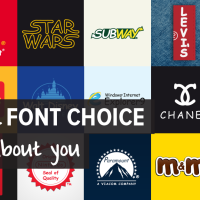
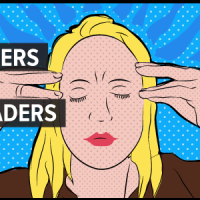

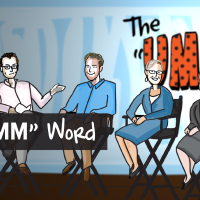


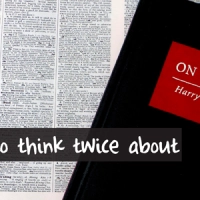
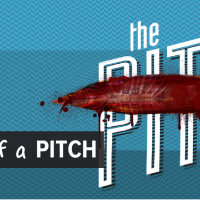





Very interesting, but I must admit I need more detail. Do you plan on writing about each of the types in further depth? Can you share any research that supports each type?
Can each type present any content succesfully or are they prone to succeed with certain content? For example, my friend is a pediatric pharmacologist who teaches part-time. Each of his slides are small essays, dry and technical. He is very comfortable with this content and can “sell” it in class. Ask him to present on something more subjective and he loses that ease.
Again, very interesting, but I am left with more questions than answers.
Thank you for the post.
Hi – Yes I do plan to post more on each type. I will post about the theoretical/ research base as well.
TO quickly answer your question – yes – certain types are prone to present content in particular ways, and this can get them in trouble. I believe that the PowerPoint that will support them will do what they don’t do. See post Stephen Colbert Gives you the Best Presentation Tip you’ll ever have
Good post, Gavin… although I had a really hard time picking ONE type for myself.
I chose The Coordinator, but I’m not really sure it fits (I actually DO like speaking and prefer free-form). I’m a bit of a Counselor, although I’m definitely not dry or clinical, and I thrive off audience engagement. I’m a Coach, but I do a lot of listening. I’m a Teacher, but I use simple visuals and I DO care about the people. I probably have some qualities of a Storyteller and an Inventor as well.
Can we add another category? Maybe “The Facilitator”….?
Steve,
Thanks for the comment. I see and hear your reaction a lot with people who basically present for a living. Think of yourself as Tiger Woods. No one would deny that he is a pretty good golfer. But he, like all golfers, fights natural tendencies in his swing, in his case, a hook.
The same with presenters. I believe that we all have natural tendencies, and these archetypes are pretty close to them. As we present more and more, we learn how to overcome our natural tendencies.
I do believe that everyone is basically one of these types, and therefore has a great affinity for two of the three parts of great communication – words, structure and pictures. What you then need PowerPoint to do is complement what you don’t do well. For instance, if you are a little all over the place, PowerPoint should be a map for you (STRUCTURE). If you search for words, PowerPoint should be a series of breadcrumbs (WORDS), if you engage with your content more than your audience, PowerPoint needs to carry the emotion for you (PICTURES). I will post more on this in coming weeks.
Because I am a total Structure nerd, this comment about words/structure/pictures helps a lot. I think I’m an Inventor/Teacher. I love the structure + I love the Q&A and adapting to the group. I always prefer a conversation over a presentation. But I can be so abstract and theoretical, that I need to remember to use pictures to help ground my talk. Thanks for the food for thought, Gavin.
I agree with Steve Cherches
I to had a really hard time picking ONE type for myself.
(and to quote)
I chose The Coordinator, but I’m not really sure it fits (I actually DO like speaking and prefer free-form).
Can we add another category? Maybe “The Facilitator”….?
Disturbed to discover that I might be a Rick Perry / Newt Gingrich hybrid!
Loved this post and the illustrations. I too had a tough time just picking one. I would say that I have a dominate approach (storyteller) and then a secondary one (coach). I think I am mos comfortable when I get to tell stories, but I have a lot of enthusiasm so can be very rah-rah at the same time. I can’t wait to find out more!
Michelle,
That makes a lot of sense. I am going to do a Webinar about this on the 31st. I will send you an invite.
Gavin
Reblogged this on poplolipop3.